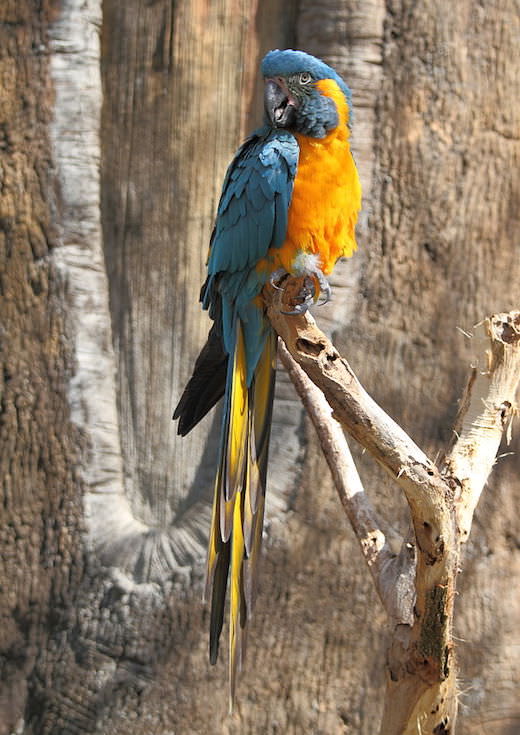Blue throated macaw

Critically endangered
Blue throated macaw is beautiful bird with features that make it stunning. It is a very large bird (85 cm) and it is widely known by its blue and yellow pattern. The Blue throated Macaw is larger than Blue and Golden Macaw but it is distinguished by a blue strip on its throat that extends to its ear coverts hence the name blue throated macaw. It has other names such as Candide Macaw and Wagler’s Macaw. The male of the species are a slightly bigger than the female. The underpants are turquoise to blue which is slightly duller on the crown and brighter on the rump. There are five to six layers of blue feathers that are unique for every bird and this is truly an easy way to differ between the birds. It has a strong dark beak and iris differ. The adult Blue throated Macaw has a yellow iris while the young one has a brown iris. The color is black at first when they are hatched and then it changes to brown what is another sweet charm of this extraordinary birds. That is not all as this pretty parrot holds a whole specter from age one to three the color of the iris is grey. It stays until the old age so scientist can determine the age of the specimen.
Like most birds, the blue throated macaw are monogamous, they live as a pair but sometimes there might be a colony that consists of up to 90 birds. They produce a high pitched noise when they see that they are in danger. Blue throated macaws do not have the same diet of seeds like other macaws instead of that they eat ripe fruits and drink from very immature fruit. They breed once a year and maybe twice if the hatching is lost. The hatching consists of three eggs which incubate for 26 days. The parents stay with a little blue throated macaw until it is a year old so it can forage food for itself. The birds reach their sexual maturity at the age of five. They usually nest in the palm trees even though sometimes that palm tree can be dead they are still going to use it as a good nesting spot. This truly is a marvelous and complicated bird.
Population Distribution
The habitat of a specie is an island or isla in Spanish and they are located in Bolivia .It can also live in savannahs and occasionally in gallery forest. As their living place is not big and their natural habitat is shrinking they became one of the most endangered species.
Threats
The first and the foremost threat is the sale of blue throated macaws as pets which is now forbidden by international laws. There is still black market as these birds are highly valued at the pet market. It had been even thought that there were no longer any wild specimens but it was rediscovered in 1992. Another threat is the burning of palm trees a practice which destroys their habitat. This must stop now and more blue throated macaws should be put in the wild where they do belong.